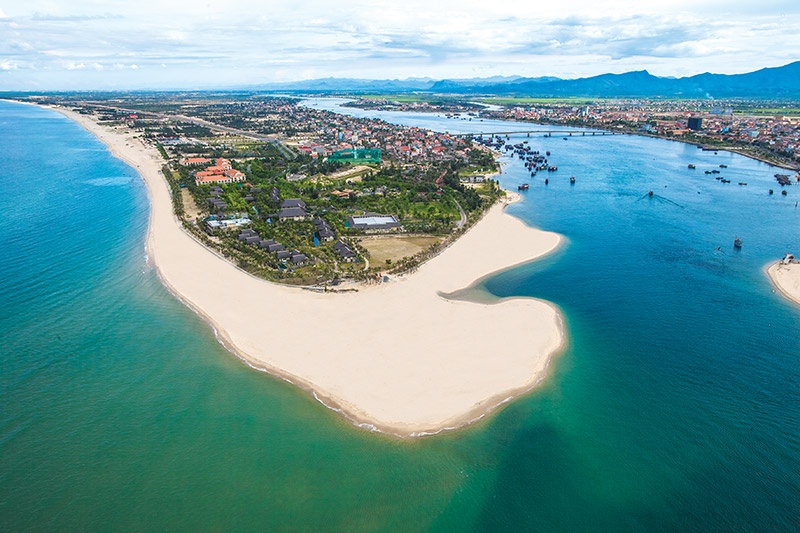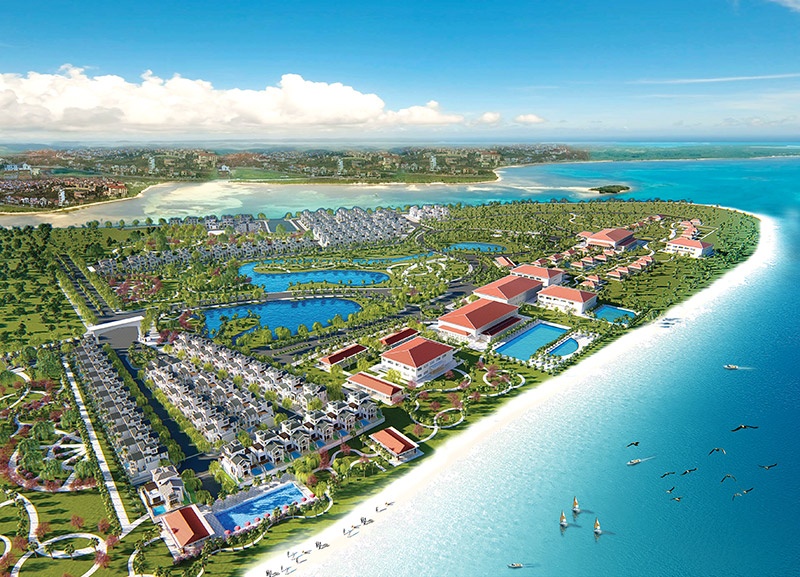Dong Hoi strives to build a civilised city
 |
| Dong Hoi strives to build a civilised city |
Dong Hoi is a tier-2 city directly under Quang Binh province, which is among the few provinces in the central region with a continuous transportation network. In recent years, the province’s infrastructure has evolved significantly, with Dong Hoi Airport located in the inner city and national arterial traffic axes including the North-South Expressway, the National Highway No.1A, the North-South Railway, the coastline route, and Ho Chi Minh Highway.
If the average width of Quang Binh is 50km, then a national road with regional links is found every 10km. This point of entry provides the province with tremendous prospects to enter its finest growth phase.
The city has seen great socioeconomic progress during the last decade. Dong Hoi People’s Committee has focused on promulgating thematic resolutions and action programmes on developing an urban civilisation to endorse the cohesiveness of the entire political system while mobilising all resources to reform and nurture the inhabitants.
Since 2010, Dong Hoi has spent over $10.87 million promoting regional culture and history. Currently, each of the city’s near-140 villages has a well-equipped communal home. In addition, all hamlets and sub-quarters build realistic conventions, and all 15 communes and wards have designed and implemented measures that fulfil the culture and sports criteria.
Multiple successes
Dong Hoi has endeavoured to preserve regional historical artefacts and traditional cultural festivals by actively promoting and introducing cultural works in tourism.
“Dong Hoi should continue upgrading its public infrastructure and cultural institutions, integrate cultural conservation and development into its urban and socio-economic development initiatives, and encourage all economic sectors to invest in tourism development,” said Ho Anh Phong, Deputy Chairman of Dong Hoi People’s Committee at an April conference on preserving and developing a civilised and modern urban area.
Secretary of Dong Hoi Party Committee Tran Phong asserted, “The city has achieved multiple notable successes in recent years by uniting the will and actions of both the public and the citizens.”
In May, a conference was held to present the construction master plan project for the city of Dong Hoi and its environs for the 2021-2045 period. During the event, a number of fundamental solutions were discussed on topics such as soft planning, flood ecology, urban forests, logistics, East-West Dien Bien Phu Boulevard, and local tourism.
Dong Hoi People’s Committee has noted that consulting units in planning development need to determine the overall planning objectives, clarify the basis of urban development based on analysis and assessment of the potentials and dynamics of each area, and simultaneously define the connectivity between existing facilities and future ones.
If Dong Hoi’s longitudinal routes are national roads, they should be designed and completed to ensure quality and effectively meet the region’s transportation needs. Nikken, a Japanese consulting service provider, has emphasised the creation of the East-West crossroads as the urban centre axis in the consultancy for the city’s master plan by 2025, with a vision towards 2035.
In the near future, Quang Binh will continue to extend and upgrade national roads to satisfy the increased demand for transportation, form a new link route to Laos via border gates, encourage the construction of Nhat Le 3 Bridge, and provide favourable conditions for land fund exploitation.
The province will also attempt to connect the southwest gateway of Dong Hoi to the sea; develop bridges and roads linking the north of Quang Trach district to Phong Nha-Ke Bang; renovate Hon La Port to accept larger ships; and expand Dong Hoi Airport to accommodate three million passengers.
 |
Specifying a new direction
Last month, Quang Binh People’s Committee heard the report of the general building planning project for Dong Hoi.
Accordingly, it is projected that Dong Hoi and the city’s surroundings will be developed over an area of over 21,250 hectares, encompassing nine wards, 11 communes, and one town. The estimated population of the city in 2045 is expected to be between 300,000 and 350,000.
By analysing existing functional subdivisions as well as functions that are lacking or have not been developed commensurately, the planning of Dong Hoi and its vicinity are oriented in four directions: sea tourism in the east (Quang Phu commune, Bao Ninh); high-quality urban areas in the south (Phu Hai, Luong Ninh, Vinh Ninh, and Quan Hau wards); agricultural, logistics, and high-tech urban areas in the west; and airport and high-speed railway station in the north.
This master plan also specifies eight subdivisions associated with four urban development directions and amendments to the 2012 master plan on land use planning, as well as technical infrastructure.
At the conference, leaders of departments, branches, and localities discussed a number of issues related to land use planning. These included the development space of Dong Hoi Airport as per international standards; development orientation of tourist urban centres; renovating existing streets; reserving land for parking lots; anti-flood drainage systems for urban areas; land for cultural institutions; and ensuring landscape preservation.
Tran Thang, Chairman of Quang Binh People’s Committee highlighted, “Dong Hoi is the political, economic, and cultural centre of the province, having special significance in the overall development of the province and connecting localities. Therefore, the planning must ensure scale, stature, and long-term development orientation in the direction of modernity.”
Thang also instructed Quang Binh Department of Construction and the consulting unit to absorb the contributions of the provincial leaders, departments, and localities, as well as provide written feedback. The document required to finish the planning project must identify Dong Hoi as a tourist city in order to clarify the reasons, supplement the necessary criteria, and modify the necessary standards.
In addition, the project needs to preserve the historical values and cultural character of the city while ensuring security and utilising the seafront, as well as the two banks of the Nhat Le River, to create ecological space for sustainable development.
What the stars mean:
★ Poor ★ ★ Promising ★★★ Good ★★★★ Very good ★★★★★ Exceptional
Related Contents
Latest News
More News
- CME Solar strengthens position in Vietnamese renewables (December 30, 2025 | 11:21)
- Self-care signals shift towards sustainable healthcare (December 30, 2025 | 10:12)
- GreenYellow marks five years of clean energy growth in Vietnam (December 26, 2025 | 15:51)
- TCP Group partner with VNUS to launch water conservation project (December 25, 2025 | 14:00)
- Heavy industries set for pilot greenhouse gas quotas (December 25, 2025 | 10:00)
- Swedfund invests in MSME growth and climate action in Vietnam (December 19, 2025 | 11:42)
- GreenYellow brings solar energy to light up remote schools in Tuyen Quang province (December 19, 2025 | 08:00)
- Charge+, Grab partner to develop EV charging network in Vietnam (December 18, 2025 | 17:11)
- Linking sci-tech and innovation to Vietnam’s net-zero future (December 18, 2025 | 14:31)
- Driving double-digit growth through green and circular transformation in Vietnam (December 17, 2025 | 09:00)

 Tag:
Tag:




















 Mobile Version
Mobile Version